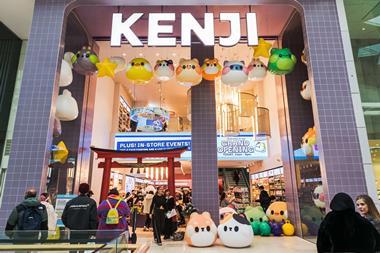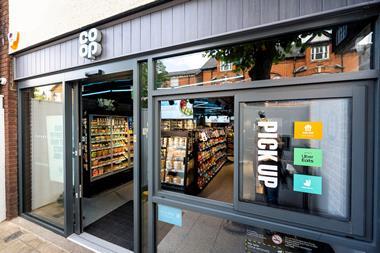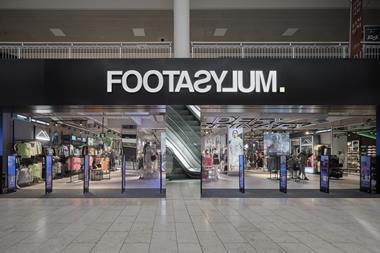The statistics alone might make you do a double take: more than 1.1 million sq ft (100,000 sq m) of exhibition space, 1,800 companies from 50 countries showing their wares in 14 halls, with each being not far off the size of Birmingham’s NEC.
The venue is Düsseldorf’s Messe and the occasion is EuroShop, the triennial shopfitting, store equipment and visual merchandising fest that draws visitors from around the world.
For five days next month, from February 23 to February 27, the organisers expect in excess of 100,000 people to pass through the glossy turnstiles in search of retail novelty and – just possibly – the next big thing.
And if you want a snapshot of almost everything you could think of that could go into creating a shop, then this is the show to attend. However, large amounts of shoe leather – or a decent pair of trainers at the least – will be required, because the mere act of covering the ground in any meaningful way necessitates a high level of fitness.
But the question must be: why bother? After all, there is an annual show in the US that does much the same thing and some of the elements that can be seen there will be apparent at EuroShop. David Dalziel, of the eponymous Dalziel + Pow design consultancy, has taken a stand at the Düsseldorf show and is sending up to 20 people over to prowl the halls for information.
“I hate exhibitions generally, but this one’s worthwhile. We think it’s a good place to capture the mood of the moment and it’s also a good opportunity to show our clients what’s happening,” he says. He points out that, because this is an event that only happens every three years and its scale dwarfs all the others, it is worth visiting for this alone.
Rodney Fitch, chairman of global design agency Fitch, is convinced of the exhibition’s merits. “A large part of the world recognises this as a centre for sophisticated retailing. It’s also the only place in Europe where you can hold a show of this size,” he says.
The thing about EuroShop, from an attendee’s perspective, is that it requires a plan of attack. Perhaps the first point to note is that the show is split into four roughly equal parts and, depending on what part of the retail spectrum you come from, you may choose to ignore certain elements as a consequence.
The first of these is EuroConcept, where the halls are devoted to shopfitting, shop furnishings, lighting, architecture and store design. Curiously, this part of the exhibition also includes refrigeration and “cooling logistics”, which – while they may not be the most glamorous part of the store interior panorama – in these green times are certain to attract their fair share of rubber-neckers.
EuroConcept is an area in which you are likely to see real innovation. Fitch recounts how he visited an Italian manufacturer of freezer cabinets at a previous EuroShop and how it had produced a curved freezer that could be wrapped around a corner. “The problem was, the double glazing that they used created distortions of the product inside when you tried to look through it. By the time of the next EuroShop, this had been resolved. EuroShop does have the capacity to act as a very effective incubator for new ideas,” he says.
The next section is EuroSales, a smaller area that deals with visual marketing, sales promotion and point of sale. IT and security technology are on view in the EuroCis section and finally, there is EuroExpo, an area that deals with exhibition stand construction. The latter seems a little gratuitous and it is quite hard to understand what it might have to do with shops, but, presumably, it seemed like a money-spinning idea to those charged with accounting for the show’s bottom line.
For the majority of visitors, therefore, there are three areas to take a look at and, given the nature of making a shop look halfway decent, EuroConcept is likely to top the list. In this part of the show, some of the stands look as if they have been on growth hormones when compared with most other exhibitions. Austrian shopfitter Umdasch, for example, has taken a 10,765 sq ft (1,000 sq m) stand. It is the size of a reasonable shop and is kitted out with a themed presentation, complete with mock shops that look at trends in food and non-food shopfitting. The stand alone would probably prove sufficient to draw people into the area, with its suspended cylinders covered in gold.
Standing out from the crowd
Like many exhibitors, Umdasch has put its best foot forward for this one, employing a Viennese architectural practice to design the stand and then using the space to display its products in a lifestyled manner, rather than as a purveyor of shopfitting kits. Other names that might be more or less familiar to UK visitors include Alu, Amtico, Vizona, Zumtobel and Tensator, among hundreds of others.
For those wanting to know more about trends in visual merchandising, almost three halls are devoted to displays by mannequin manufacturers and VM companies from around the world. By its very nature, this is a high-profile area and, given its position next to the main entrance, it is quite hard to avoid.
And then there is the Designer Village, as well as sundry conferences and workshops. The first of these only started as recently as 2005, with an area where design consultancies could show off their wares and tout for business. Names – known and unknown – on this side of the channel include Dalziel + Pow and Campbell Rigg, both from London, Blocher Blocher Partners from Stuttgart and Plajer & Franz from Berlin. In all, this time round, more than 20 companies have taken the (pricy) plunge and headed off to the Messe in search of new clients.
As well as an impressive field of speakers drawn from the retail design arena, the EuroShop Retail Design Conference, organised by the EHI Retail Institute, provides those who are weary of walking the halls with the chance to sit down. While doing so, they will hear from the likes of Ron Pompei, whose New York design company Pompei AD designed the Urban Outfitters store in Stockholm, Ole Scheeren, from OMA/Koolhaas and from Rodney Fitch himself, who chairs the event on February 23. There is also a Point of Purchase conference on February 26, organised by POPAI (Point of Purchase Advertising International) and EHI.
But does all of this add up to a sufficiently compelling set of reasons for boarding a plane to Düsseldorf? National Association of Shopfitters director Robert Hudson is going and sees the trip as worthwhile. “We are always looking at new markets and we must always remember that there can be a tendency in this country to be a little bit insular,” he says. This seems reason enough to dig deep but, given that it’s something that has to be done only once every three years, EuroShop should be on every retailer’s calendar.


























No comments yet